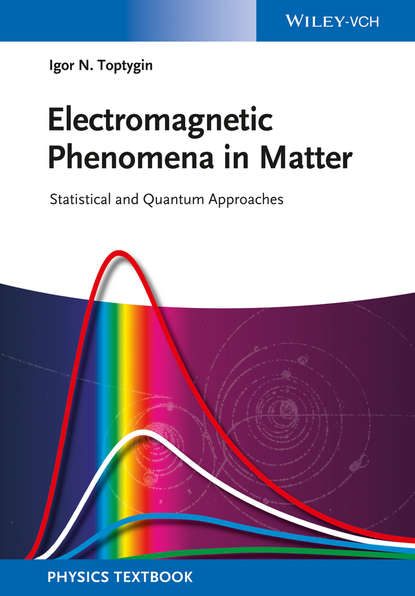
Electromagnetic Phenomena in Matter скачать fb2
Igor N. Toptygin - Electromagnetic Phenomena in Matter краткое содержание
Modern electrodynamics in different media is a wide branch of electrodynamics which combines the exact theory of electromagnetic fields in the presence of electric charges and currents with statistical description of these fields in gases, plasmas, liquids and solids; dielectrics, conductors and superconductors. It is widely used in physics and in other natural sciences (such as astrophysics and geophysics, biophysics, ecology and evolution of terrestrial climate), and in various technological applications (radio electronics, technology of artificial materials, laser-based technological processes, propagation of bunches of charges particles, linear and nonlinear electromagnetic waves, etc.). Electrodynamics of matter is based on the exact fundamental (microscopic) electrodynamics but is supplemented with specific descriptions of electromagnetic fields in various media using the methods of statistical physics, quantum mechanics, physics of condensed matter (including theory of superconductivity), physical kinetics and plasma physics. This book presents in one unique volume a systematic description of the main electrodynamic phenomena in matter: – A large variety of theoretical approaches used in describing various media – Numerous important manifestations of electrodynamics in matter (magnetic materials, superconductivity, magnetic hydrodynamics, holography, radiation in crystals, solitons, etc.) – A description of the applications used in different branches of physics and many other fields of natural sciences – Describes the whole complexity of electrodynamics in matter including material at different levels. – Oriented towards 3-4 year bachelors, masters, and PhD students, as well as lectures, and engineers and scientists working in the field. – The reader will need a basic knowledge of general physics, higher mathematics, classical mechanics and microscopic (fundamental) electrodynamics at the standard university level – All examples and problems are described in detail in the text to help the reader learn how to solve problems – Advanced problems are marked with one asterisk, and the most advanced ones with two asterisks. Some problems are recommended to be solved first, and are are marked by filled dots; they are more general and important or contain results used in other problems.
Чтобы оставить свою оценку и/или комментарий, Вам нужно войти под своей учетной записью или зарегистрироваться




